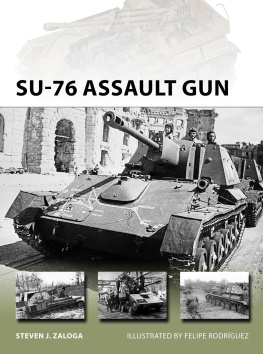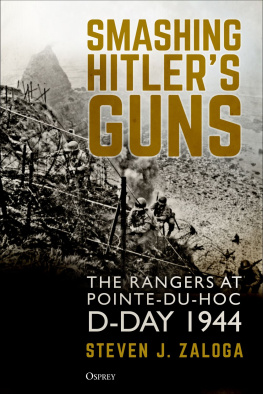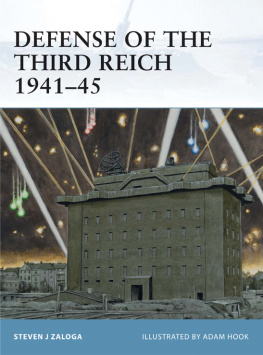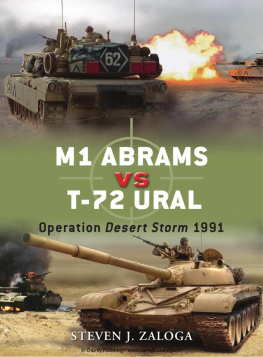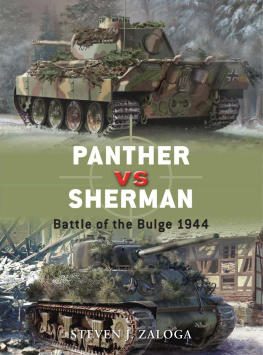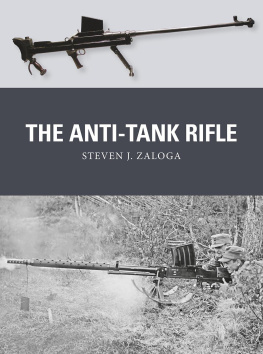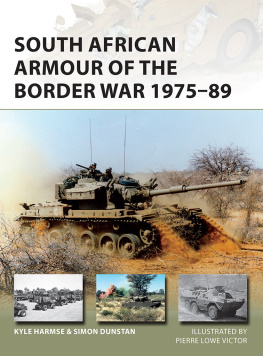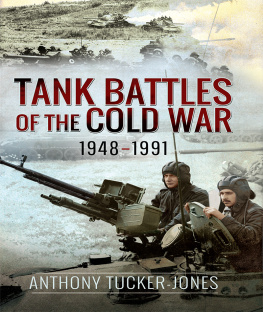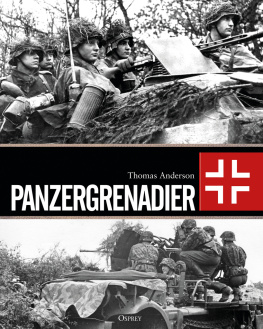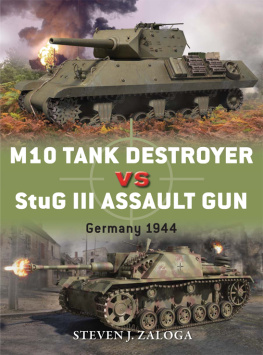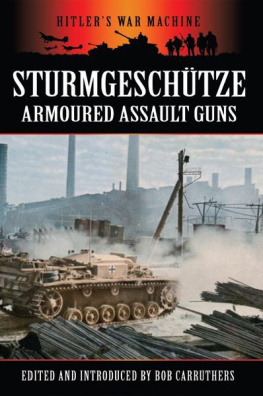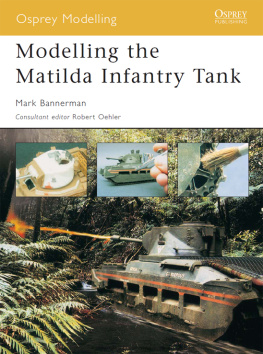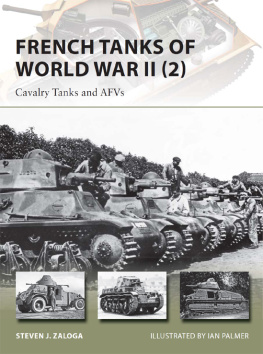CONTENTS

SU-76 ASSAULT GUN
INTRODUCTION
The SU-76 is one of the more obscure Soviet armored fighting vehicles (AFV) of World War II, even though it was built in larger numbers than any other Soviet AFV except for the T-34. It was an unexceptional vehicle in nearly all technical respects, with a modest gun and thin armor. It is often mistaken as a tank destroyer, mainly due to the similarity of its configuration to the German Marder Panzerjger. In reality, its role was closer to that of the Wehrmachts Sturmgeschtz III (StuG III), an assault gun to provide mobile, close fire support to the infantry. The modest features of the SU-76 were largely shaped by the limited resources of the Soviet armored vehicle industry during the war years. Some of the Soviet plants could not manufacture larger and heavier vehicles, and the SU-76 was at the threshold of their industrial capacities. Although the SU-76 remained in service well into the 1950s, this class of vehicle largely disappeared from the Soviet Army in the Cold War years. The SU-76 saw limited service in Cold War conflicts and was best known for its role in the Korean War in 1950. It was exported in significant numbers to Soviet allies, including the Warsaw Pact countries and China.
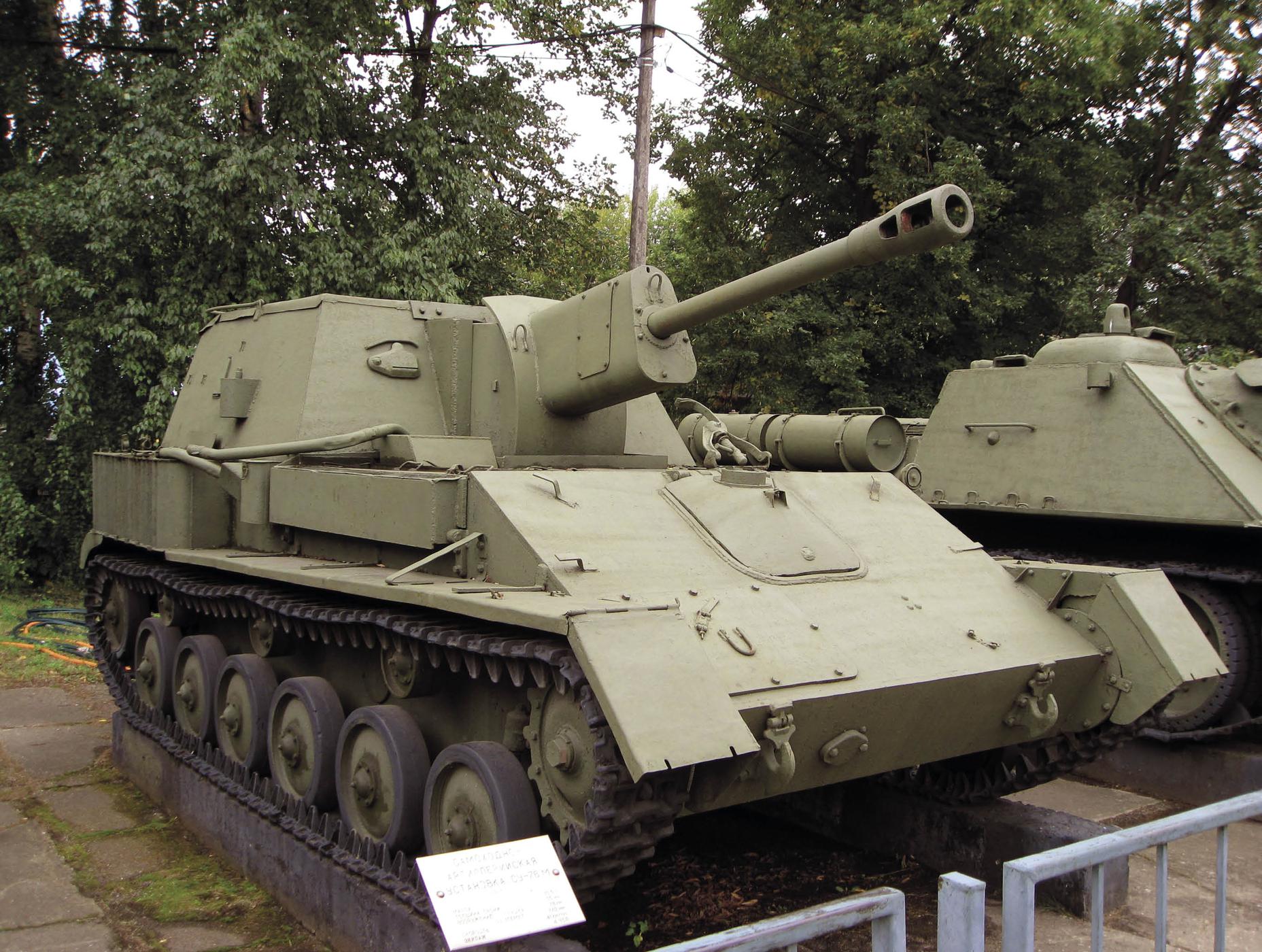
A SU-76M on display at the Russian Central Armed Forces Museum in Moscow. This is the late production style developed at Factory No. 40 in Mytishchi, with the raised rear side armor introduced in April 1945.
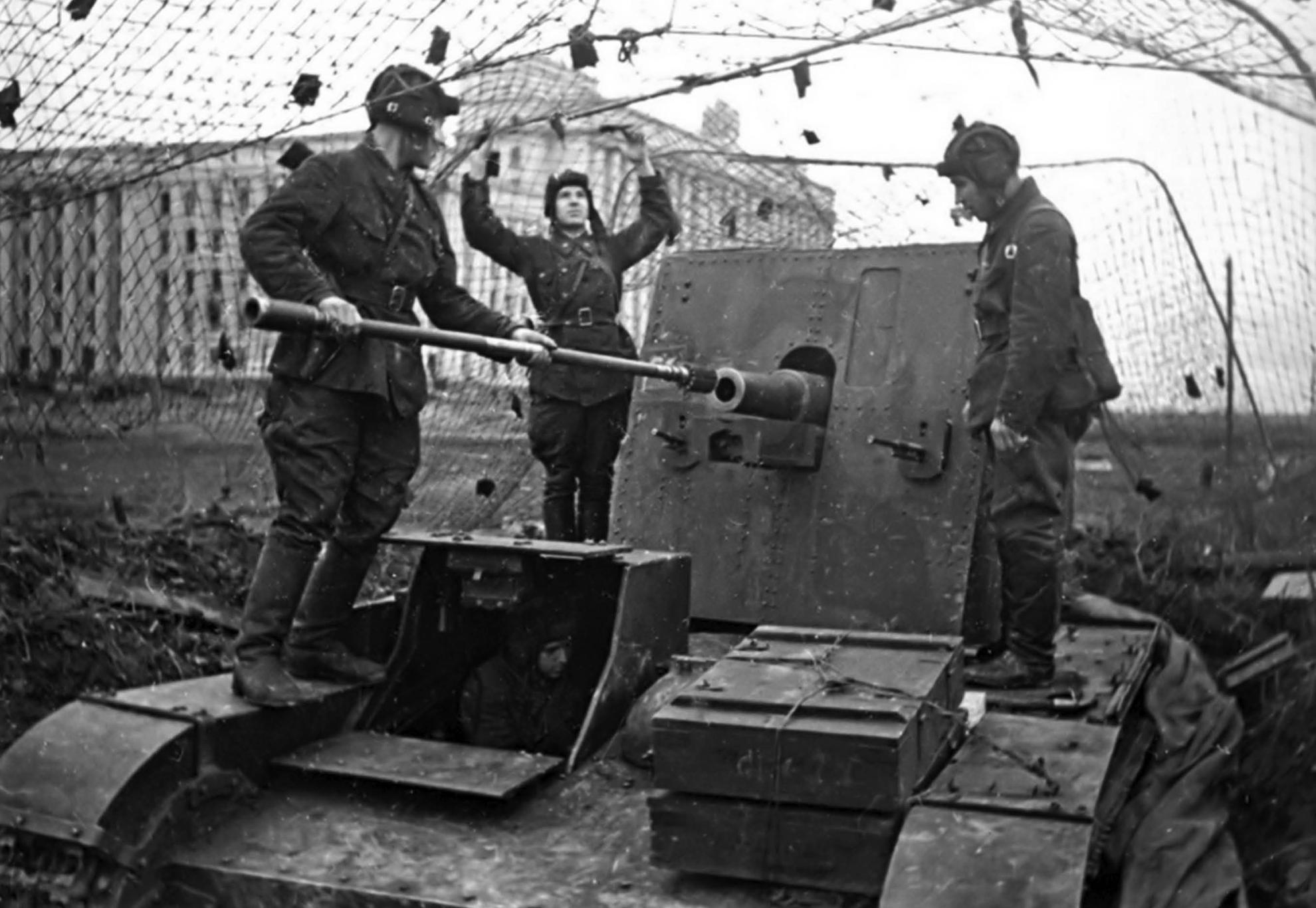
There were some early experiments with self-propelled guns in 1941 such as the T-26-6, a simple conversion of the T-26 light tank at the Voroshilov Factory No. 174 mounting the KT-28 76mm tank gun behind a simple gun shield. These saw extensive combat use in the Leningrad area.
DEVELOPMENT
The Red Army developed numerous self-propelled guns prior to 1941, but none were produced in significant numbers. These vehicles were all designated as samokhodnaya ustanovka self-propelled mounts whether they were used as assault guns, self-propelled field artillery, or self-propelled antiaircraft artillery. Most of the self-propelled guns developed after the start of the Great Patriotic War in 1941 were tank destroyers. A typical example was the ZiS-30 that consisted of the T-20 Komsomolets artillery tractor fitted with the ZiS-2 57mm ant itank gun.
One of the earliest self-propelled 76mm guns from 1941 was the T-26-6, a simple conversion of the T-26. These were constructed at the Voroshilov Factory No. 174 by removing the turret and superstructure from T-26 tanks and mounting the KT-28 76mm tank gun on a pintle mount behind a simple gun shield. These were built in modest numbers and saw combat mainly on the Leningrad Front. They were an improvised design, mainly intended to provide the ubiquitous T-26 tank with a more powerful gun in a low-cost c onversion.
Development of self-propelled guns was delayed until early 1942 due to the dislocation of many factories that were moved into the Urals region in late 1941 to prevent their capture by the advancing Wehrmacht. The first serious effort was outlined in a January 29, 1942 requirement that proposed using the T-60 light tank chassis as the basis for a family of self-propelled guns, including a 76mm assault gun and a pair of related antiaircraft vehicles using the 25mm 72-K or 37mm 61-K automatic cannons. The 76mm assault gun was designed for support of mechanized units against tanks, trenches, strongpoints and enemy troops (with shrapnel). The weight will be 7.5 to 8 tonnes and the weight of its special trailer will be 3.5 to 4 tonnes. As can be seen, the idea was to build an ammunition trailer along with the assault gun on the assumption that such a small vehicle could only carry 20 rounds, which was clearly insufficient for prolong ed combat.

The first attempt to develop a light self-propelled 76mm gun was the SU-32 built by Factory No. 37 in Sverdlovsk using T-60 light tank sub-assemblies. It established the basic layout for the eventual SU-76, but required extensive redesign.
The initial requirements did not make a formal decision regarding the associated 76mm gun. The documents mentioned the ZIS-5 76mm tank as used on the KV heavy tank, as well as the USV gun, one of the later developments of the 76mm divisional gun. In the event, the future design would almost all be centered around the ZIS-3 76mm divisional gun. This was the latest in a series of 76mm divisional guns introduced into the Red Army since the early 1930s. The ZIS-3 M1942, developed under Vasily Grabin, was intended to reduce the weight, cost, and complexity of the earlier guns. This gun is often mistakenly identified as an antitank gun, when in fact the antitank gun member of this artillery family was the 57mm ZIS-2 gun. The 76mm ZIS-3 was simply the latest in a long line of Russian/Soviet divisional guns, tracing its ancestry back to the 3in/76mm Model 1902 gun. This was the standard field artillery weapon in rifle divisions and was used in essentially the same role as the German 10.5cm lFH 18, British 25-pdr or American M2A1 105mm howitzer. The Red Army, unlike many other armies, did not increase the caliber of its divisional gun between World War I and Wor ld War II.
Development of the first vehicle to address this requirement was assigned to Factory No. 37, that had moved from Moscow to Sverdlovsk in October 1941. (Sverdlovsk returned to its traditional name of Yekaterinburg after the dissolution of the Soviet Union.) The plant had begun to manufacture the T-60 light tank in February 1942. No sooner was light tank production organized than on March 9, 1942, the State Defense Committee (GKO) ordered a shift in production at Factories No. 37 and No. 38 from the T-60 to the improved and larger T-70 light tank. The T-60 was viewed as obsolete since it was armed only with a 20mm gun. While this gun was marginally effective against German light tanks, it did not fire a worthwhile high-explosive (HE) projectile and so was not especially useful against typical battlefield targets. The new T-70 tank was essentially a T-60 enlarged enough to permit the use of a 45mm gun. Although this gun had been developed in the 1930s as an antitank gun, it had an associated HE round and so was more versatile on the battlefield. There was very little debate whether the T-70 was a superior design to the T-60, which it certainly was. The main problem in early 1942 was that the light tank plants had barely managed to initiate T-60 production when the government suddenly decided to switch to T-70 production. This would require substantial retooling at the factories that would take a significant amount of time in view of the very limited industrial resources available at these plants. As a result of these complaints, the GKO on April 12, 1942 granted Factory No. 37 permission to continue the manufacture of the T-60 until August 1942 to provide time for retooling while also permitting the factory to reach its monthly tank product ion quota.
The controversy over T-60 versus T-70 production affected the design of the new assault gun. Overall supervision of the program was assigned to Semyon A. Ginzburg. He was an accomplished prewar tank designer associated with the previous T-26 and T-50 light tank programs, and subsequently assigned as a roving tank design specialist after being evacuated from encircled Leningrad. The project at Factory No. 37 was under chief designer N. A. Popov, although assistant designer G. S. Surenyan handled most of the assault gun project. Two separate design efforts were undertaken: the Obiekt 31 based on the T-60 chassis and the Obiekt 32 on the T-70 chassis. Since Factory No. 37 wasnt producing the T-70 yet, both prototypes were in fact built from T-60 or modified T-60 components. Design work began in April 1942 and three armament configurations were studied: the 76mm assault gun and two different antiaircraft vehicles. Both the ZIS-3 divisional gun and the ZIS-5 tank gun were considered for the assault gun. Both weapons shared ammunition and ballistic characteristics, but their trunnion and recoil systems were significantly different due to their dissimilar app lications.

